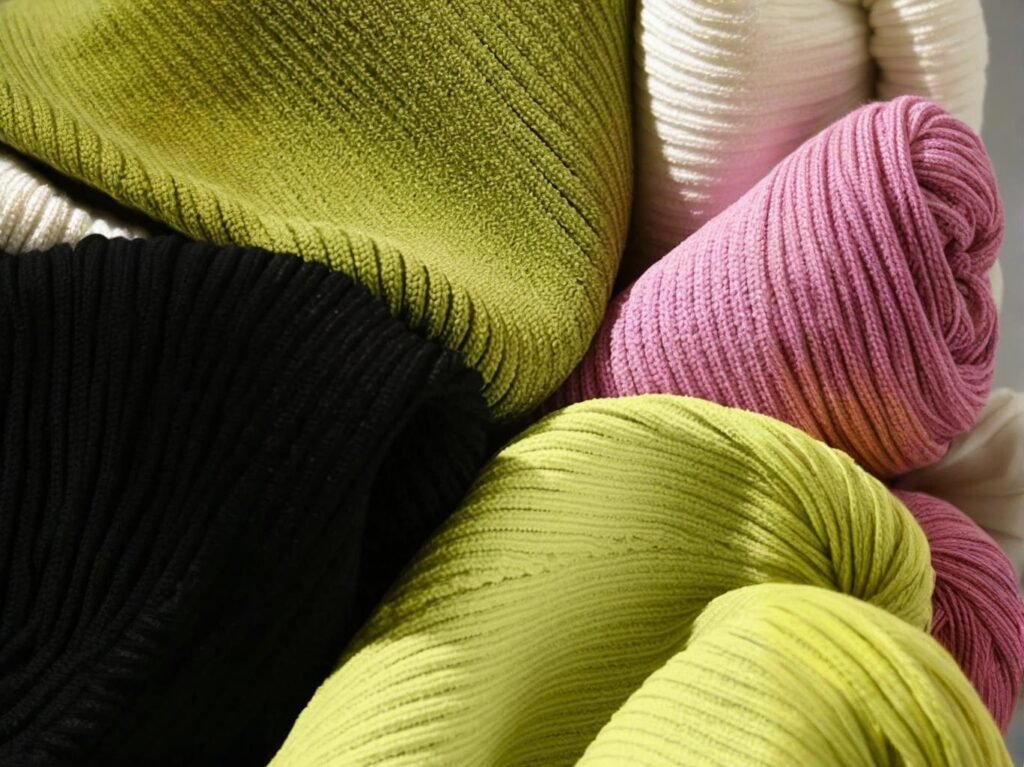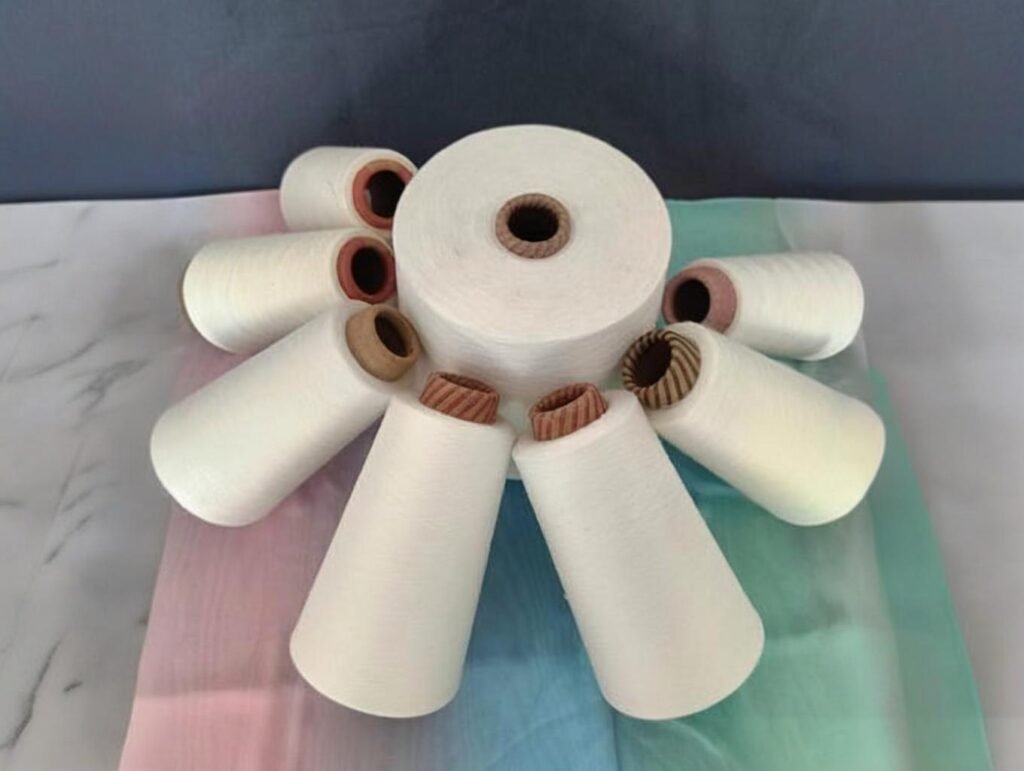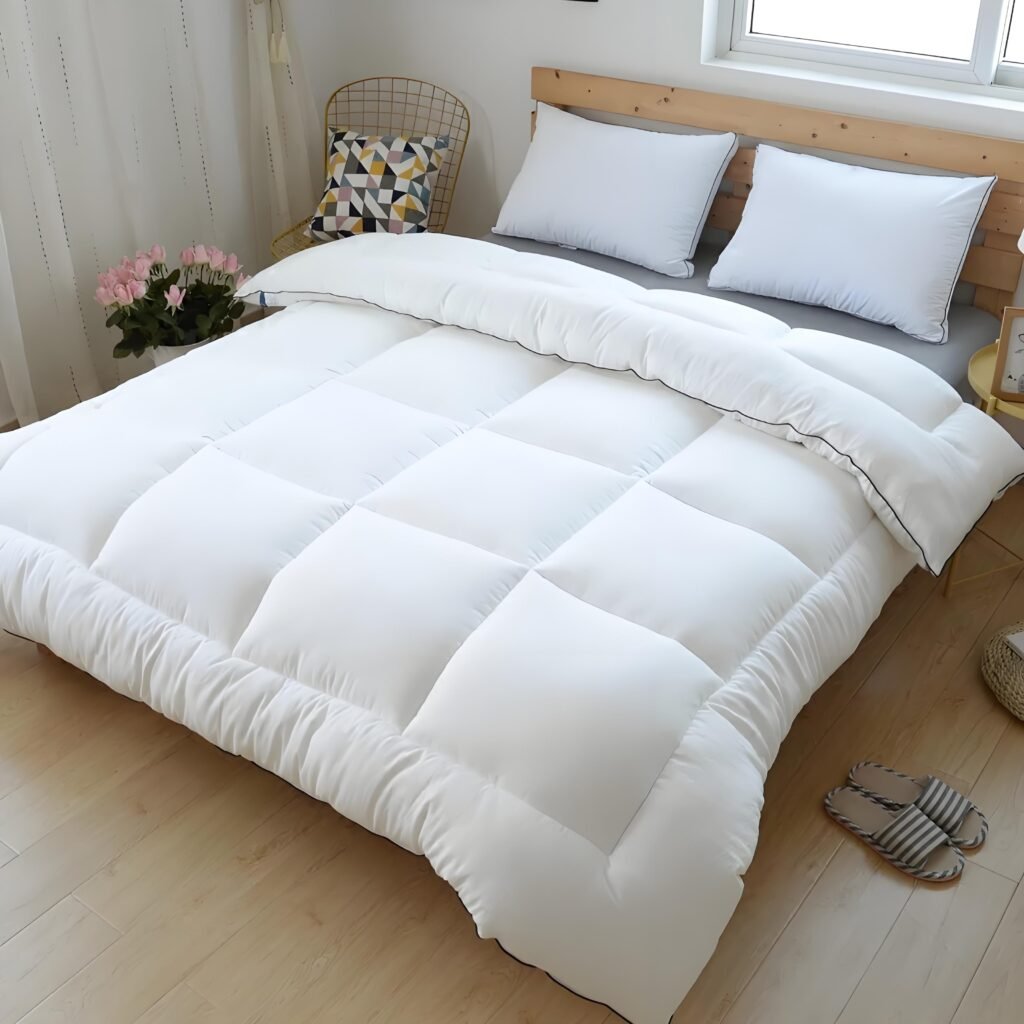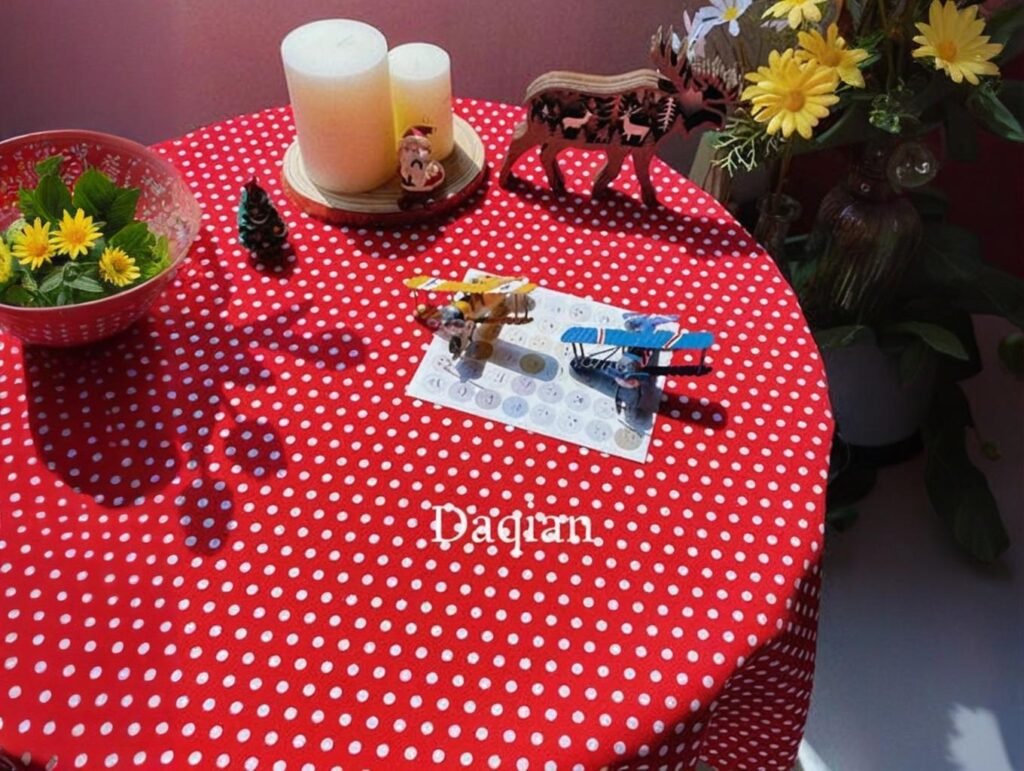Imagine two wholesale rolls of fabric side by side: one earthy‑textured cotton canvas, the other sleek and technical polyester. Which one should you pick for your next custom project? It’s tempting to go with polyester’s high-tech appeal, but cotton canvas often brings unmatched comfort, durability, and a premium feel that builds brand trust—if chosen carefully.
Cotton canvas offers breathability, eco‑friendliness, and a tactile look ideal for personalized designs, while polyester provides consistent sizing, high water resistance, and cost predictability—suiting different custom manufacturing needs.
To really decide which fabric is “better,” we need to go beyond general assumptions. Things like brand positioning, end‑use environment, printing processes, durability thresholds, and even customer perceptions come into play. Stick around—later in this article, we’ll dive into a story about how a boutique gear brand switched from polyester to canvas and saw customer retention soar.
What Are the Key Differences Between Cotton Canvas and Polyester Fabric?

Cotton canvas and polyester fabric are two of the most commonly used textiles in manufacturing, each with its own distinct characteristics, advantages, and limitations. Choosing between them requires understanding not only the basic material differences but also how they perform in specific applications, from apparel and accessories to industrial gear.
Where cotton canvas delivers natural breathability, tactile authenticity, and long-term comfort, polyester stands out for dimensional stability, water resistance, and industrial-level durability. This makes each fabric better suited to different environments, consumer preferences, and branding goals.
Fiber Origins
Cotton Canvas
Cotton canvas is a plant-based fabric woven from cotton fibers—often in a plain or duck weave for added strength. Being a natural fiber, it has a matte, organic aesthetic and tends to soften over time with wear and washing, giving it a lived-in character that appeals to many consumers.
Polyester
Polyester is a synthetic polymer derived from petrochemical processes. Its fibers are engineered for uniformity, ensuring consistent thickness, dye uptake, and performance. Because it is man-made, polyester is free from many of the inconsistencies found in natural fibers, making it ideal for precision-driven production.
Cotton Canvas
Initially stiff and structured, cotton canvas gradually becomes more supple and pliable with use. It has a matte, tactile finish that offers a sense of rugged authenticity—perfect for brands that want to emphasize craftsmanship and tradition.
Polyester
Polyester typically has a smooth, slightly glossy surface, with a hand-feel that can range from crisp to silky depending on weave and finish. It retains its texture over time and does not “break in” like canvas does, which is ideal for uniform, mass-produced items.
Dimensional Stability
Cotton Canvas
Canvas is prone to natural shrinkage of about 2–5%, especially if untreated. Pre-washing or sanforization can minimize this effect. It may also stretch slightly under prolonged tension, though the effect is usually minor in heavy-duty weaves.
Polyester
Polyester offers excellent dimensional stability, resisting shrinkage, stretching, and distortion even after repeated industrial washes. This makes it a top choice for uniforms, sportswear, and outdoor gear where exact sizing must be maintained.
Breathability & Moisture Handling
Cotton Canvas
Cotton fibers wick moisture away from the body and allow heat to escape, making canvas more comfortable for prolonged wear—particularly in warmer climates. However, untreated canvas will absorb water rather than repel it.
Polyester
Polyester fibers are hydrophobic, meaning they naturally resist water absorption. This allows polyester fabrics to dry quickly and shed light rain. However, they can trap heat and moisture unless the weave is ventilated or blended with breathable fibers.
Direct Feature Comparison
| Feature | Cotton Canvas | Polyester |
|---|---|---|
| Breathability | High | Low–Medium |
| Shrinkage | 2–5% | Minimal |
| Water Resistance | Needs treatment | Intrinsic |
| Surface Feel | Softens with time | Consistently firm |
| Color Uniformity | May vary batch to batch | Very consistent |
Real-World Application Story
A US-based eco-apparel brand tested custom tote bags made from both cotton canvas and polyester. Customer feedback revealed that the canvas bags felt sturdier, more premium, and “authentic”, aligning better with the brand’s sustainability values. Sales data showed that reorders for the canvas version grew by 35% in just six months—largely fueled by word-of-mouth recommendations from satisfied buyers.
If your priority is precision printing, consistent performance, and high water resistance, polyester may be the superior choice. Its ability to hold shape, color, and finish makes it well-suited for technical applications, branded merchandise, and outdoor gear.
However, if your brand identity emphasizes eco-conscious sourcing, timeless durability, and tactile appeal, cotton canvas often provides greater perceived value. When paired with traceable sourcing, low-impact dyeing, and sustainable certifications such as GOTS or OEKO-TEX, cotton canvas becomes not just a fabric—but a storytelling asset for your brand.
How Do Durability and Strength Compare in Custom Applications?
When evaluating durability and strength for custom textile applications, it’s important to look beyond just tensile strength figures. Real-world performance is influenced by abrasion resistance, seam integrity, UV stability, water resilience, and how the material ages throughout its lifecycle. Different end-use scenarios—such as outdoor gear, industrial covers, or premium consumer goods—will place varying demands on the fabric.
In custom manufacturing, the choice between cotton canvas and polyester often comes down to balancing mechanical performance with aesthetic longevity and user comfort. Let’s break down how both fabrics measure up in key performance areas.
Tensile & Tear Strength Performance
Laboratory testing under warp/weft tensile stress and tear load offers quantifiable insight into how much force a fabric can withstand before breaking. Abrasion resistance, measured in Martindale cycles, simulates long-term wear from friction.
| Fabric | Tensile Strength (warp/weft) | Tear Strength | Abrasion Resistance (Martindale Cycles) |
|---|---|---|---|
| 12 oz Cotton Canvas | \~400 N / 300 N | \~15 lbs | \~20,000 cycles |
| 600D Polyester | \~700 N / 600 N | \~20 lbs | \~25,000 cycles |
Analysis:
- Polyester shows a higher breaking point in tensile and tear tests, making it structurally stronger in raw numbers.
- Canvas offers respectable strength, and in many cases, its thicker yarns distribute stress more evenly, preventing sudden failure.
Wear-Cycle Insights in Practical Use
Cotton Canvas
- Handles friction gracefully, developing a patina rather than surface pilling.
- Heavy weaves distribute wear across a broader area, reducing localized damage.
- Particularly good for load-bearing zones like straps, reinforcements, and handles.
Polyester
- Maintains visual consistency longer in the short term.
- May fray at high-stress seams or pill under repeated rubbing.
- Strong moisture and mildew resistance make it better for humid conditions.
Weather and UV Resistance Under Stress
Canvas Performance
- Untreated canvas absorbs moisture, which can lead to faster fading and reduced lifespan in constant sun exposure.
- When waxed or coated, water resistance improves significantly, making it competitive for outdoor gear.
- UV resistance is moderate—fabric will fade after prolonged exposure unless treated with UV inhibitors.
Polyester Performance
- Solution-dyed polyester offers exceptional UV stability, resisting fading for 1,000+ hours before noticeable degradation.
- Naturally hydrophobic fibers repel water, making it more resistant to rain without the need for coating.
- Maintains structural integrity even after long-term environmental exposure.
Field Performance in Harsh Conditions
A custom outdoor gear supplier switched from polyester to 12 oz cotton canvas for their roll-top backpack line.
- Context: Porters in Southeast Asia used these backpacks in high-load, high-humidity, and high-wear conditions.
- Result: Canvas showed fewer seam blowouts and stress tears, especially around closures and lift points.
- Trade-off: Initial water resistance decreased compared to polyester, but applying a simple wax coating restored protection and enhanced durability.
This case highlights how structural resilience sometimes matters more than moisture resistance—especially in scenarios where gear is carried by hand or worn on the body for long hours.
Balanced Viewpoint for Custom Applications
- If repetitive abrasion, heavy load-bearing, or high-tension points are central to your product design, cotton canvas may outperform synthetics in long-term structural integrity.
- If the product will face constant moisture, heavy rainfall, or intense UV exposure, polyester will likely maintain appearance and performance longer—but may degrade in comfort and tactile quality over time.
Ultimately, the ideal choice often involves hybrid thinking: using canvas in high-wear zones for tactile strength and polyester in exposure-prone zones for weatherproofing. This approach combines the best attributes of both materials, enhancing both performance and user satisfaction.
Is Cotton Canvas or Polyester More Suitable for Printing and Branding?

When choosing between cotton canvas and polyester for printing and branding, the decision isn’t just about surface smoothness—it’s about ink chemistry, finish quality, tactile feel, and long-term brand impact. Both fabrics can carry designs beautifully, but they interact with inks and printing technologies in fundamentally different ways. Your selection should be guided by brand identity, production method, and target audience expectations.
Ink Compatibility & Finish Quality
Printing success starts with choosing a method that aligns with the fiber type. Cotton’s cellulose-based structure binds naturally with water-based or pigment inks, while polyester’s synthetic surface requires inks that bond chemically to non-porous fibers.
| Print Method | Cotton Canvas | Polyester |
|---|---|---|
| Screen Printing | Excellent with water-based or discharge inks; deep saturation, matte finish | Fair; works best with plastisol inks for opacity |
| DTG (Direct-to-Garment) | Excellent; vibrant colors, soft-hand feel, ideal for small runs | Not recommended; ink adhesion is poor without costly pretreatments |
| Sublimation | Not compatible (natural fibers can’t absorb sublimation dye) | Excellent; produces photo-quality prints and full-color gradients |
| Heat Transfer Vinyl (HTV) | Good adhesion; works for custom lettering or small logos | Excellent adhesion; sharp edges and vibrant colors |
| UV Printing | Acceptable with primer coating; more rigid feel | Excellent; crisp, durable prints on pretreated surfaces |
Key Insight:
- Cotton Canvas excels when you need soft, artisan finishes that blend with the fabric.
- Polyester dominates in crisp, high-definition graphics, especially for promotional or technical products.
Print Longevity & Tactile Feel
The durability and hand-feel of prints differ greatly between the two fabrics.
Cotton Canvas
- Inks penetrate the yarns, creating embedded color that softens with fabric aging.
- Slight texture variation adds a handcrafted aesthetic, making each print subtly unique.
- Ideal for heritage branding, artisan markets, and sustainable lines.
Polyester
- Inks bond to the surface, resulting in razor-sharp edges and a slightly plastic feel.
- Maintains graphic crispness even after repeated washing—especially in sublimation prints.
- Favored for sportswear, event merchandise, and high-volume corporate branding.
Real-World Insight
A UK-based artist collective produced two limited-run tote bag collections—one in cotton canvas and one in polyester.
- The cotton version had a matte, ink-absorbing finish, giving artwork a museum-quality aesthetic. It resonated with art lovers and sold at 2× the price of polyester bags.
- The polyester version offered consistent, vibrant color reproduction, appealing to a different audience—corporate buyers seeking brand-uniform giveaways.
Customization Flexibility
- Cotton Canvas:
- Adapts well to vintage, distressed, or weathered effects.
- Supports over-dyeing and post-print garment washes for one-of-a-kind designs.
- Best for brands that value organic storytelling and tactile depth.
- Polyester:
- Excels in precise, repeatable, color-true prints.
- Compatible with advanced digital workflows for large-scale uniformity.
- Best for performance apparel, banners, and corporate merchandise where consistency is key.
Critical Thinking Note
Ask yourself:
- Does your brand’s story revolve around heritage, craftsmanship, and sustainability? → Cotton Canvas may better embody your message.
- Does your production demand photo-real precision, moisture resistance, and mass uniformity? → Polyester will deliver the results you need.
Remember—the fabric is part of your brand voice. Every texture, print method, and finish tells customers what your product stands for.
Which Material Performs Better in Outdoor and Weather-Resistant Products?
Choosing between cotton canvas and polyester for outdoor applications comes down to more than just “which one repels water better.” It’s about performance across different weather conditions, the comfort level in long-term use, and how the fabric behaves over months or years in the field.
Polyester tends to dominate in instant water resistance and fade protection without any extra treatment. But with proper waxing or silicone impregnation, cotton canvas can be just as weatherproof—and in many situations, even more comfortable for prolonged outdoor exposure thanks to its breathability and natural climate regulation.
Weather Resistance Comparison
| Feature | Cotton Canvas (Waxed) | Polyester (600D or 1680D) |
|---|---|---|
| Water Resistance | High (when wax treated or silicone coated) | High (built-in from coatings) |
| UV Resistance | Moderate to High (may need re-proofing) | Very High (solution-dyed fibers) |
| Mold/Mildew Resistance | Moderate (natural fibers) | High (synthetic composition) |
| Temperature Tolerance | Excellent (remains stable in heat/cold) | Good (can soften in extreme heat) |
| Re-treatable | Yes—multiple methods like wax, silicone, or fluorocarbon | Limited—coatings can crack or peel over time |
Use-Case Stories
Cotton Canvas in Real-World Outdoor Gear
A premium glamping tent brand equips all their structures with waxed cotton canvas walls. Their reason? Customers consistently report better climate balance—cooler during the day, warmer at night—and significantly less condensation build-up compared to polyester tents.
Polyester in High-Moisture Environments
A marine upholstery company producing seat cushions for sailboats chooses coated 600D polyester. The fabric’s high UV stability and mildew resistance ensure 3+ years of vivid color and structure retention even under constant sun and salt spray exposure.
Moisture & Drying Considerations
Cotton Canvas
- Drying Speed: Slower than polyester.
- Breathability: Superior—prevents that sticky, “plastic raincoat” feeling.
- Comfort: Maintains a balanced internal climate in tents, jackets, and backpacks.
Polyester
- Drying Speed: Rapid—ideal for areas with frequent rainfall or water exposure.
- Breathability: Low—can trap sweat or condensation without ventilation.
- Comfort: Feels protective but can get clammy in hot, humid conditions.
Human-Centered Comfort Factor
When it comes to how a product feels in use:
- Canvas creates a more natural, organic microclimate, making it ideal for tents, outdoor apparel, and gear used in mixed or hot climates.
- Polyester offers bulletproof storm protection but may sacrifice comfort during extended wear or in humid conditions.
Real-World Outdoor Applications
| Product Category | Preferred Material | Why |
|---|---|---|
| Camping Tents | Cotton Canvas (waxed) | Temperature stability, breathability, reduced condensation |
| Boat Covers | Polyester (coated) | UV stability, mildew resistance, saltwater durability |
| Outdoor Cushions | Polyester (solution dyed) | Water repellency, long-term colorfastness |
| Tool Rolls | Cotton Canvas | Classic rugged look, abrasion resistance, easy repair |
Balanced Insight
There’s no one-size-fits-all answer:
- Polyester is the ready-to-go option for extreme wet conditions, marine settings, or when you need minimal maintenance.
- Canvas, once treated, offers decades of comfort, re-coating possibilities, and superior temperature balance, making it a favorite for luxury outdoor gear and heritage brands.
In short—polyester wins on instant weatherproofing, canvas wins on human comfort and adaptability over time.
How Do Sustainability and Eco-Friendliness Compare Between Cotton Canvas and Polyester?

When evaluating cotton canvas and polyester through the lens of sustainability, the differences become clear—but neither fabric is perfect. Cotton canvas, being a natural, renewable fiber, scores high in biodegradability and can be exceptionally eco-friendly if grown and processed under organic or low-impact systems. Polyester, in contrast, is petroleum-derived, energy-intensive to produce, and a primary source of microplastic pollution in waterways.
That said, modern innovations like recycled polyester (rPET) and water-saving cotton cultivation are narrowing the gap, giving brands more responsible material choices.
Environmental Impact Overview
| Factor | Cotton Canvas | Polyester |
|---|---|---|
| Raw Material Source | Renewable (cotton plants) | Non-renewable (fossil fuels) |
| Biodegradability | Yes—breaks down in months/years under composting | No—persists for centuries |
| Carbon Footprint (kg CO₂/kg fabric) | 1.8–3.2 (organic cotton) | 5.5–7.5 |
| Microplastic Shedding | None | Significant during washing |
| Water Usage in Production | High (conventional farming) | Moderate |
Certifications to Look For
For Cotton Canvas
- GOTS (Global Organic Textile Standard): Ensures organic farming methods and responsible processing.
- Better Cotton Initiative (BCI): Promotes water efficiency and reduced chemical use.
For Polyester
- Bluesign®: Certifies reduced environmental impact and safe chemical usage.
- Global Recycled Standard (GRS): Verifies the use of post-consumer recycled materials.
For Both Fabrics
- OEKO-TEX® Standard 100: Guarantees the absence of harmful substances for end users.
Case Example: Shifting Toward Organic Cotton Canvas
A sustainable outdoor gear brand replaced polyester lining fabrics with GOTS-certified organic cotton canvas. The shift achieved:
- 22% reduction in product-level carbon footprint.
- Improved customer perception—many buyers praised the natural feel and eco commitment.
- Enhanced product storytelling, positioning the brand as a premium eco-conscious leader in the outdoor market.
Sustainability Trade-Offs
Cotton Canvas
- Advantages: Renewable, biodegradable, non-shedding, long-lasting when cared for.
- Challenges: High water use in conventional farming, potential pesticide load (unless organic).
Polyester
- Advantages: Lower water usage, durability in certain environments, potential for recycling.
- Challenges: Petrochemical base, microplastic shedding, non-biodegradable waste.
Innovation Trends Improving Both Fabrics
- For Cotton Canvas:
- Drip irrigation and rain-fed cotton farming to reduce water use.
- Integrated pest management and regenerative agriculture to restore soil health.
- For Polyester:
- rPET from post-consumer bottles and textile waste.
- Advanced filtration systems to capture microplastics during washing.
Balanced Insight
If biodegradability and natural sourcing are your top priorities, cotton canvas—especially organically certified—is the clear winner. For brands needing high performance with lower water inputs, recycled polyester offers a more sustainable alternative to virgin synthetics.
Ultimately, the most responsible path may be a hybrid approach, using each material where its environmental advantages outweigh its drawbacks, backed by credible certifications.
What Are the Typical Cost Differences Between Cotton Canvas and Polyester for Custom Orders?
When sourcing fabrics for custom manufacturing projects, understanding the cost dynamics between cotton canvas and polyester is critical. While polyester is generally cheaper upfront—thanks to inexpensive raw materials and faster, more automated production—cotton canvas often commands a higher price due to its natural fiber sourcing, heavier weight, and more labor-intensive processing.
For many applications, however, the “cheaper” option is not always the most cost-efficient when you factor in durability, performance, and product positioning. In premium markets, canvas’s longevity, texture, and perceived value can more than offset its higher material cost.
Cost Comparison Table (Per Yard)
| Fabric Type | Typical Price Range (USD/yard) | Factors Affecting Cost |
|---|---|---|
| Cotton Canvas | \$7 – \$15 | Organic content, GSM/oz weight, weave density, finishing treatments (waxing, dyeing) |
| Polyester | \$3 – \$8 | Denier rating, coating type (PU, PVC), dyeing method (solution-dyed vs. piece-dyed) |
Factors Driving the Price Gap
1. Raw Material Sourcing
- Cotton Canvas: Derived from renewable crops, which are subject to seasonal yield fluctuations and commodity market prices.
- Polyester: Petroleum-based and less affected by seasonal variation, making costs more predictable.
2. Production Speed & Energy Use
- Cotton canvas requires longer processing, including spinning, weaving, and finishing treatments.
- Polyester can be produced rapidly in continuous manufacturing runs, benefiting from economies of scale.
3. Finishing & Treatments
- Treatments such as waterproofing, flame-retardancy, or antimicrobial coatings add 15–30% to the base cost for both fabrics.
- Cotton may require additional pre-shrinking or colorfastness treatments, further increasing costs.
Additional Cost Considerations
- Processing Time: Cotton takes more time to finish due to natural fiber stabilization.
- Eco Certifications: Organic cotton and sustainable polyester (rPET) come at a premium.
- Order Size: Bulk purchasing significantly lowers per-yard costs for both fabrics, but polyester often benefits more from large-scale runs.
- Freight & Duties: Canvas is generally heavier than polyester per yard, potentially raising shipping costs for bulk orders.
Real-World Client Examples
- Case 1 – Premium Market: A European furniture manufacturer chose 12 oz cotton canvas despite higher unit costs. Over time, they experienced fewer returns, better brand reputation, and increased repeat orders—proving that customer satisfaction outweighed initial price differences.
- Case 2 – Mass-Market Focus: A large-scale promotional bag supplier opted for 600D polyester for its lower cost and color uniformity in bulk production. For a campaign distributing over 50,000 units, cost savings reached 25% compared to canvas.
Cost Efficiency Tips for Buyers
- Evaluate Total Lifecycle Cost
- Factor in product lifespan, maintenance, and potential returns—not just raw fabric prices.
- Negotiate with Long-Term Suppliers
- Building stable supplier relationships can secure better rates and priority lead times.
- Order in Bulk When Possible
- Larger orders reduce per-yard costs through economies of scale.
- Optimize Fabric Specification
- Choosing the right GSM, weave, and treatment can achieve the required performance at a lower cost.
- Be Strategic with Finishes
- Apply coatings only where necessary to control cost increases of 15–30%.
Which Fabric Is More Versatile for Various Industries and Product Types?

When it comes to cross-industry applications, both cotton canvas and polyester have strong versatility, but the decision on which to use depends heavily on end-use requirements, environmental conditions, and brand positioning. Cotton canvas stands out where comfort, natural aesthetics, and eco-conscious branding are important. Polyester dominates in sectors that prioritize waterproofing, UV stability, and lightweight durability.
In recent years, the rise of sustainable blends and hybrid constructions has further expanded the design possibilities—allowing manufacturers to combine the best of both worlds.
Industry Application Comparison
| Industry | Cotton Canvas Use | Polyester Use |
|---|---|---|
| Outdoor Furniture | Cushions, heavy-duty covers, artisanal upholstery with a premium feel | Waterproof furniture covers, poolside and marine-grade seating |
| Fashion & Accessories | Tote bags, luxury backpacks, heritage workwear jackets, rugged outdoor apparel | Sportswear, rainwear, promotional backpacks, gym bags |
| Marine & Automotive | Wax-treated boat covers, convertible top fabrics, heavy-duty tarps | Seat covers, boat upholstery, sail covers, cargo liners |
| Industrial Workwear | Durable aprons, tool rolls, carpenter’s belts, FR-treated protective gear | High-visibility vests, water-resistant uniforms, lightweight jackets |
| Event & Hospitality | Decorative tents, festival shade sails, market canopies | Temporary shelters, branded waterproof banners, event signage |
Versatility in Design and Function
1. Cotton Canvas Advantages
- Rich Dye Absorption: Offers deep, vibrant colors and vintage wash effects.
- Tactile Authenticity: Natural, breathable texture that softens over time for user comfort.
- Adaptable Treatments: Can be waxed, FR-treated, or coated without losing its organic look.
- Custom Craftsmanship Appeal: Suited for limited runs, artisanal goods, and heritage-style designs.
2. Polyester Advantages
- High Performance in Extreme Conditions: Water-resistant, quick-drying, and tear-resistant.
- Consistent Manufacturing: Uniformity in weight, texture, and color across large runs.
- UV Stability: Solution-dyed polyester resists fading for thousands of hours outdoors.
- Cost-Efficient Mass Production: Lighter per yard, lowering bulk shipping and production costs.
Hybrid Solutions in Modern Manufacturing
Many manufacturers now combine cotton canvas and polyester in strategic ways to meet multiple performance goals:
- Canvas Exterior + Polyester Lining: Achieves a natural outer appearance with a moisture-resistant inner barrier.
- Poly-Cotton Blends (e.g., 65/35): Offers balanced strength, comfort, and easier maintenance.
- Layered Technical Fabrics: Cotton for touchpoints, polyester mesh for ventilation, and coated polyester for outer weather shielding.
These hybrid approaches are especially common in tactical gear, outdoor backpacks, and premium workwear, where no single fabric meets all the functional and branding requirements.
How to Choose the Right Supplier for Custom Cotton Canvas or Polyester Fabric?
Choosing the right supplier for custom cotton canvas or polyester fabric is not simply a matter of finding the lowest price—it’s about securing a reliable partner who can consistently deliver quality, customization, and timely service. The ideal supplier should meet your technical requirements, branding goals, and sustainability commitments, while also being able to adapt to changing market demands.
When evaluating potential partners, consider the full scope of their capabilities, from material sourcing and production technology to quality control and customer support.
Supplier Evaluation Checklist
| Criteria | Questions to Ask |
|---|---|
| Quality Assurance | Do they provide lab test reports, inspection certificates, and physical sample swatches for verification? |
| Customization Capabilities | Can they accommodate specific GSM, treatments (e.g., waterproofing, FR), custom colors, and unique weaves? |
| Sustainability Practices | Do they hold GOTS, OEKO-TEX®, Bluesign®, or other eco-certifications? Are they transparent about sustainable sourcing? |
| MOQ & Lead Time | Are their minimum order quantities flexible for trial runs? What are their standard and expedited lead times? |
| Communication & Support | Is their customer service responsive, multilingual, and experienced in your industry? |
| Production Capacity | Can they scale up production for bulk orders or repeat runs without sacrificing quality or timelines? |
Why Choose SzoneierFabrics?
With over 18 years of industry expertise, SzoneierFabrics is a trusted partner for custom cotton canvas and polyester fabric solutions. We combine technical precision, creative flexibility, and sustainability to help brands succeed.
Our Core Advantages:
- Low MOQ & Fast Sampling – Ideal for startups and small-batch custom runs.
- Full Customization – Tailored dyeing, printing, coating, and special treatments for any application.
- Certified Sustainability – Access to organic cotton, recycled polyester, and eco-friendly finishes.
- Dedicated Technical Support – Expert guidance from initial design to final delivery.
- Global Logistics – Reliable worldwide shipping with on-time delivery guarantees.
Client Success Story
A US-based outdoor furniture startup partnered with SzoneierFabrics to create a custom weatherproof cotton canvas line. Our team provided material recommendations, prototyping, and performance testing to ensure the fabric met both aesthetic and durability standards. From concept to commercial production, the entire process took only four months—allowing the client to launch ahead of schedule and secure repeat orders.
The Supplier is as Important as the Fabric
Selecting between cotton canvas and polyester is just one part of the decision—the supplier’s expertise, infrastructure, and reliability will directly impact the success of your product. A strong supplier will not only deliver on technical specs but will also provide strategic input on improving fabric performance, cost-efficiency, and brand differentiation.
Ready to source premium custom cotton canvas or polyester fabric?
Contact SzoneierFabrics today for expert advice, free samples, and flexible production solutions tailored to your business needs.

